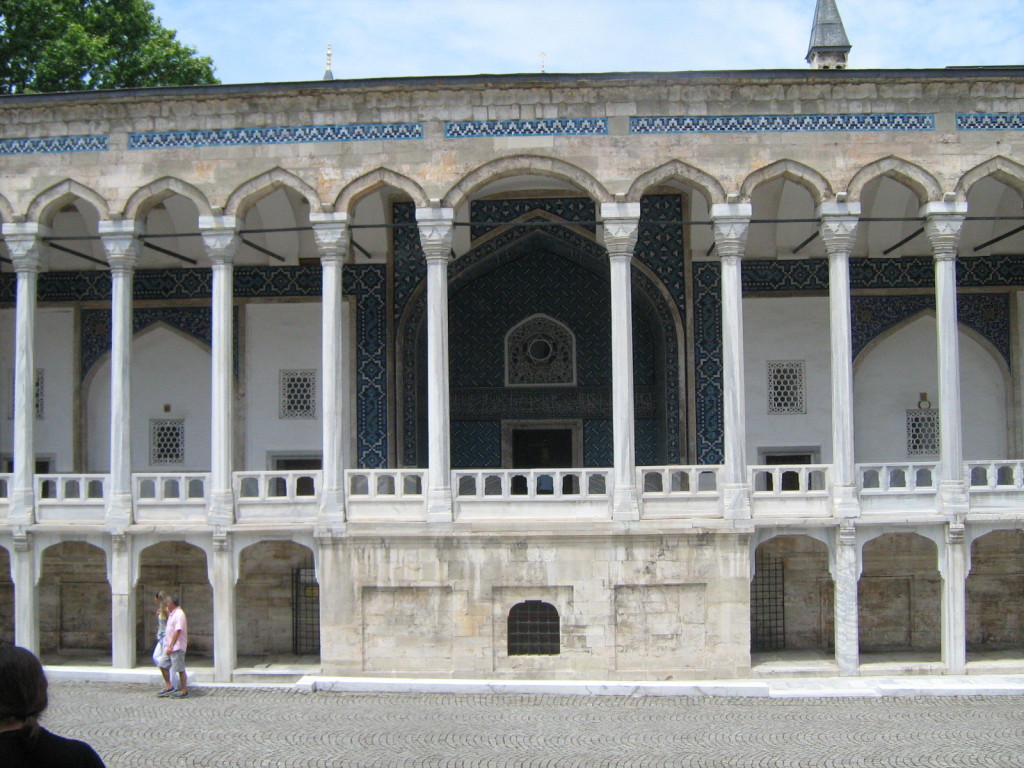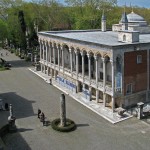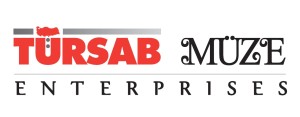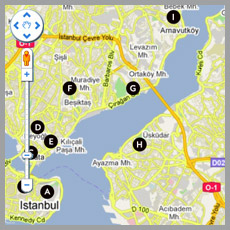A blue which never fades… a coral red envied even by nature… a golden yellow which inspired the name “glass palace”…
The Tiled Pavilion Museum (Çinili Köşk Müzesi ) housing traditional art as part of the istanbul museums of archaeology, takes its visitor off to a different dimension.
Where to start really? Should we begin with the date of inauguration 120 years ago of the İstanbul Archaeological Museum on 13 June 1891? Or should we go further back and remember the time of Sultan Mehmet II the Conqueror?
These questions suffice to show what a historical journey the Tiled Pavilion went through. Their answers contain such details which are not only worth reading but also inspire you to go and visit the “Glass Palace”.
The Tiled Pavilion Museum… The museum is not only a treasure of art due to the 900 years old tiles and ceramics on display inside, but also due to the graceful and refineddecoration of the building.
The Tiled Pavilion is one of the first buildings constructed in İstanbul by orders of Sultan Mehmet II the Conqueror. The structure, nowadays part of the İstanbul Museums of Archaeology, was built in 1472 in the Sarayburnu (the Seraglio Point) woods within the ramparts of the Topkapı Palace. It is considered a fine example of an early Ottoman civilian building inspired by Seljukian architectural style built in İstanbul. It is composed of a main dome based on cross vaults and further domed sections at its four corners. A colonnade arcade on 14 columns is adorning its front. The fame of the pavilion stems rather from its tiles than the construction’s technical characteristics. Covered with uniquely coloured navy blue, golden yellow, blue and white tiles, the pavilion was given the name of “Glass Palace” by the people of İstanbul.
Also called “Kasr-ı Kâşi” (meaning also ‘Tiled Pavilion’ in old Ottoman language with reference to the city of Kâsh, a tiles producing centre in Iran), was used as the“Müze-i Hümayun”, the Imperial Museum between 1875-1891. During the years following the foundation (1923) of the Republic of Turkey, the building served as part of theTopkapı Palace Museum.
Finally, in 1981, it was decided to include the Tiled Pavilion Museum within the compound of the Archaeological Museum, among other, due to its physical proximity to the main building of that museum.The Tiled Pavilion Museum is housing today overtwo thousand tiles and ceramicworks of art. The Seljuk and Ottoman tiles and ceramics dating from the 11th century up to the first period of the 20th century are on display in 6 different halls of the museum.
The blue which did not fade for 500 years One of the most interesting pieces of the museum where tiles and ceramics produced in İznik, Kütahya and Çanakkale are displayed, is the ‘Tiled Altar’, the “Çinili Mihrab”, (mihrab:niche in a mosque wall indicating the direction of Mecca). The altar is a fine example of 15th century Ottoman art of tiles manufactured with a special coloured glazing technique. Composed of tile plates ornamented with plant and geometric patterns inscribed with verses from the Bakara Sure of the Holy Quran (the second and longest chapter of the Quran composed of 286 verses: Surah al-Baqarah). Adorned with the most exquisite samples of calligraphy in “naksh” and “cufic” styles, the altar looks like a sea of tiles bustling with golden yellow and white waves.
Golden yellow
Another interesting piece of the museum is the “Life Water Fountain”, the “Ab-I HayatÇeşmesi”. A niche dismounted from one of the rooms of the building was transformed into a tiered, ornamental fountain.
The peacock figures surrounded by plant designs on the fountain’s slab are the particular feature of this magnificent piece of art. The fountain with its golden hand-drawn designs, with the 12 verses poetry written in “ta’liq hat”, (the old Islamic calligraphy style known as the Nasta’liq script) on its two flanks, is considered a masterpiece of the 15th -16th centuries’ art of tile-making. According to its inscriptions, the fountain was created in 1590 during the reign of Sultan Murat III.
The fountain was also admired by the founder of the Imperial Museum (later Archaeological Museum), Osman Hamdi Bey, who had had photographed himself in front of it and made an oil painting of this photo in 1904 and gave it the name Ab-ı Hayat, (Life Water). In 2004, that painting of Osman Hamdi Bey was placed in the niche directly facing the Life Water Fountain.
The Tiled Pavilion Museum is home, besides the above-mentioned masterpieces, to a great number of pieces in smaller size. The collection of Seljuk period tiles is an important part of the museum…
The 12th century tiles are known from the Seljuk period, which use the Minai technique. The technique involved the usage of seven colours, with blue, green and turquoise applied on an underglaze and fired. Other colours such as yellow, red, white, black and sometimes gold were then applied on top of this, constituting the overglaze and re-fired at a lower temperature.
The 13th century tiles made with the ‘underglaze’ technique and deco rated with animal figures and star designs originate from the Kubada bad Palace excavations in Konya.
The coral red
The world famous İznik tiles from the 14th-16th centuries are also on display at the museum. The dishes, the water mugs, the carafes and the oil lamps used in mosques, ornamented with hadiths and verses of the Quran, fabricated from the end of the 15th century until the beginning of the 16th century are the most precious items of this collection. However, the most impressive particularity of this section lies in the special pieces on which the ‘coral red’ colour was applied masterfully.
Those are the work of masters collaborating with the Nakkaşhane, (the painting workshop inside the Ottoman Court). Those masters, as distinct from traditional tile masters, reached the peak of their art by way of applying the bright coral red colour of slightly relieved designs under a transparent glaze. Their products consist mainly of dishes, calices, oil lamps, stoups, spandrels, overhead panels.
The Kütahya green
The tile and ceramic industries of Kütahya (ancient Ko tyaion) have long traditions, going back to the times of the ancient Anatolian Phrygian civilization. Kütahya is famous for its kiln products, such as tiles and pottery, which are glazed and multicoloured. The Kütahya collection of the museum include items fabricated from the 18th century until the beginning of the 20th century such as pitchers, coffee cups, cup holders, mugs, closed vessels, dishes decorated with women figures dressed in local, regional folk costumes, inkpots, and decorative balls ornamented with angel figures.
Green, orange, turquoise, blue, dark blue, red and yellow coloured ceramics are decorated with human and animal figures depicted in great detail and a vivid manner.
A heaven of patterns
The Tiled Pavilion Museum is housing also the less well-known Çanakkale Hellespont ceramics consisting mainly of dishes manufactured from the 18th century to the beginning of the 20th century, adorned with ship, pavilion and mosque designs, plant patterns, animal figures. The rich diversity of animal figures is surprising, because even giraffes which never set foot on Anatolian soil are depicted on ceramic dishes, reflecting the rich design perception of the Çanakkale region. In addition to the great variety of designs, the Çanakkale ceramics are also drawing attention through their original shapes. There are, for instance, chicken shaped jugs and pitchers with a twisted handle in the form of a turban, in the Çanakkale ceramics collection of the museum.
The museum which is even worth visiting for its building only, presents the historic evolution of the Seljukian and Ottoman art in a pleasant setting. The daily life of the Anatolian people opens out the gates of imagination.

This article has originally appeared in “Müze” Magazine, published quarterly with the contributions of the Ministry of Culture and Tourism. We would like to thank TÜRSAB Museum Enterprises for sharing this piece with Istanbul Digital Platform followers.






















